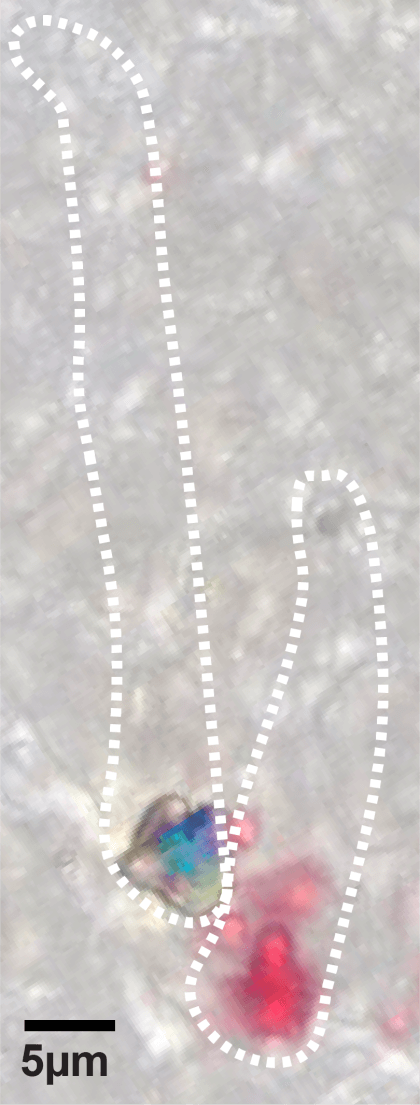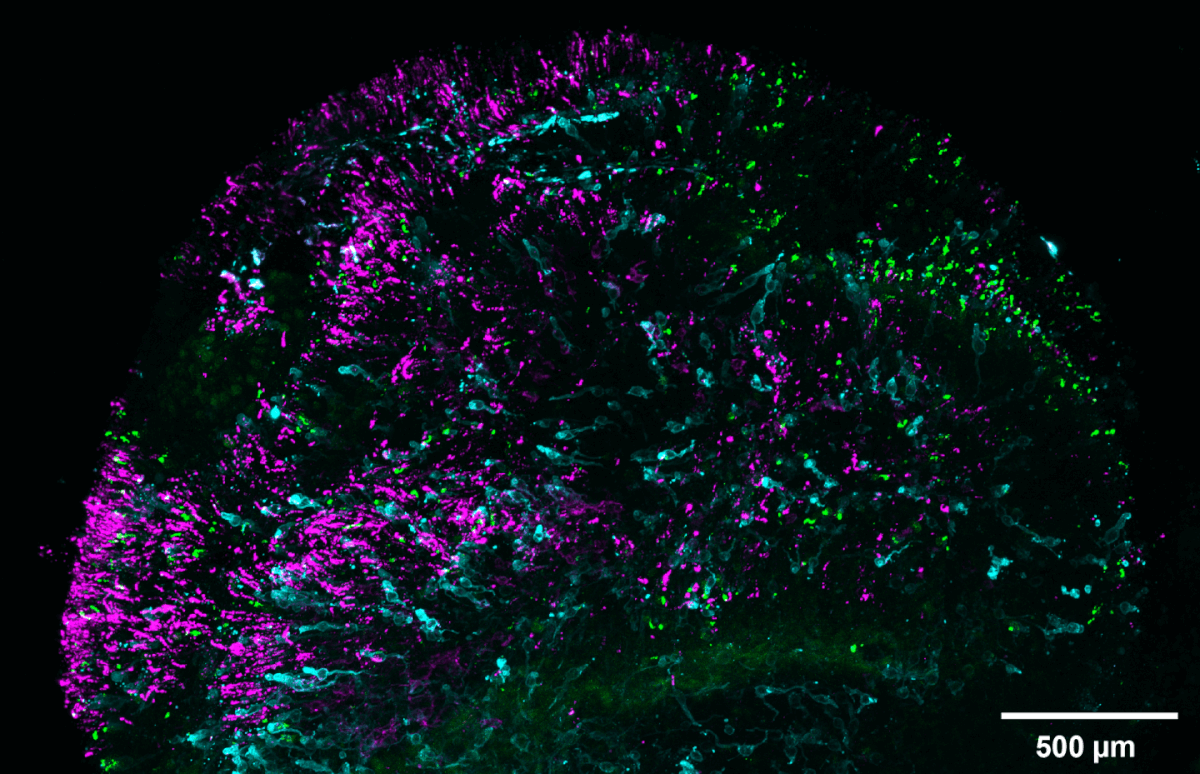BALTIMORE — Humans are able to see a wide spectrum of colors that countless other mammals miss out on. For example, while human eyes are capable of perceiving color combinations of red, blue, and green, dogs are only able to detect blue and yellow. Now, for the first time ever, researchers at Johns Hopkins University have discovered how an “offshoot” of vitamin A generates the specialized cells that make it possible for people to enjoy a rainbow of color.
Study authors explain their findings wouldn’t have been possible without a series of human retinas grown in a petri dish.
“These retinal organoids allowed us for the first time to study this very human-specific trait,” says study author Robert Johnston, an associate professor of biology, in a media release. “It’s a huge question about what makes us human, what makes us different.”
This work expands modern science’s grasp of color blindness, age-related vision loss, and additional diseases linked to photoreceptor cells. The study also shows how genes instruct the human retina to produce specific color-sensing cells. Up until now, scientists always assumed thyroid hormones controlled that process.
By tweaking the organoids’ cellular properties, researchers discovered that a molecule known as retinoic acid is responsible for determining if a “cone” (photoreceptor cells found in the retina) will specialize in sensing red or green light. Crucially, only humans with normal vision, as well as closely related primates, develop the red sensor.
For decades, scientists believed red cones formed based a “coin toss” mechanism involving cells haphazardly committing to sensing either green or red wavelengths. Meanwhile, recent research from Prof. Johnston’s team suggests the process may be under the control of thyroid hormone levels. However, this latest work indicates red cones materialize following a specific sequence of events orchestrated by retinoic acid inside the eye.

Study authors detail the discovery of high levels of retinoic acid in early development of the organoids that correlates with higher ratios of green cones. Similarly, low acid levels changed the retina’s genetic instructions, then generated red cones later on in the development process.
“There still might be some randomness to it, but our big finding is that you make retinoic acid early in development,” Prof. Johnston adds. “This timing really matters for learning and understanding how these cone cells are made.”
Green and red cone cells are actually quite similar – except for one protein called opsin that detects light and tells the brain what colors are seen. Different opsins decide if a cone will become a green or a red sensor. It is important to note, though, the genes of each sensor remain 96 percent identical. Thanks to a breakthrough technique that spotted these subtle genetic differences in the organoids, researchers tracked cone ratio changes over the course of 200 days.
“Because we can control in organoids the population of green and red cells, we can kind of push the pool to be more green or more red,” explains co-author Sarah Hadyniak, who conducted the research as a doctoral student in Johnston’s lab and is now at Duke University. “That has implications for figuring out exactly how retinoic acid is acting on genes.”

The research team was also sure to map the widely varying ratios of these cells across the retinas of 700 adults. Observing how the green and red cone proportions changed in humans ranked among their more surprising findings, Hadyniak adds.
Scientists still do not fully understand how the ratio of green and red cones is able to vary so greatly without actually influencing vision. If these cells determined the length of a human arm, the different ratios would produce “amazingly different” arm lengths, according to Prof. Johnston.
In order to cultivate a greater understanding of diseases such as macular degeneration, which can lead to the loss of light-sensing cells near the center of the retina, study authors aim to continue their research in unison with other Johns Hopkins labs. Moving forward, the main goal is to better grasp how cones and other cells link to the nervous system.
“The future hope is to help people with these vision problems,” Prof. Johnston concludes. “It’s going to be a little while before that happens, but just knowing that we can make these different cell types is very, very promising.”
The study is published in the journal PLoS Biology.
You might also be interested in:
- New camera reveals what life looks like through animals’ eyes with near-perfect accuracy
- Do humans see the same colors monkeys can? Scientists find the answer
- Animals see different colors depending on where they live
- Cure for blindness on the horizon? Lab-grown eye cells successfully ‘connect’ to retina

Because our ancestors ate fruits and vegetables as much as they did meat and needed to spot ripe — and safe — plant food. Recently our lives have converged as we became more carnivorous and theirs scavenged our garbage.
Yes DCM, precisely. This raises a semantic point, when to ask Why and when to ask How. The article answers How. The point about being able to spot colourful fruits in daylight answers Why in the (relatively) weak sense of explanation. There is also a strong sense of Why: agency. Any creationist out there care to comment? Another ‘weak’ Why argument is that predators like dogs and cats sacrifice colour vision in favour of night vision. I was watching one of the Attenborough documentaries in which a team was trying to film gorillas in dense African forest that also harboured elephants. At one point they heard poachers’ gunshots, and immediately abandoned the shoot. One commented that getting back to their base camp before dark was a matter of life and death. Years ago I used to feel my way home from work through a forest in total darkness. I could not have got(ten) away with that had been wild animals there – especially elephants.